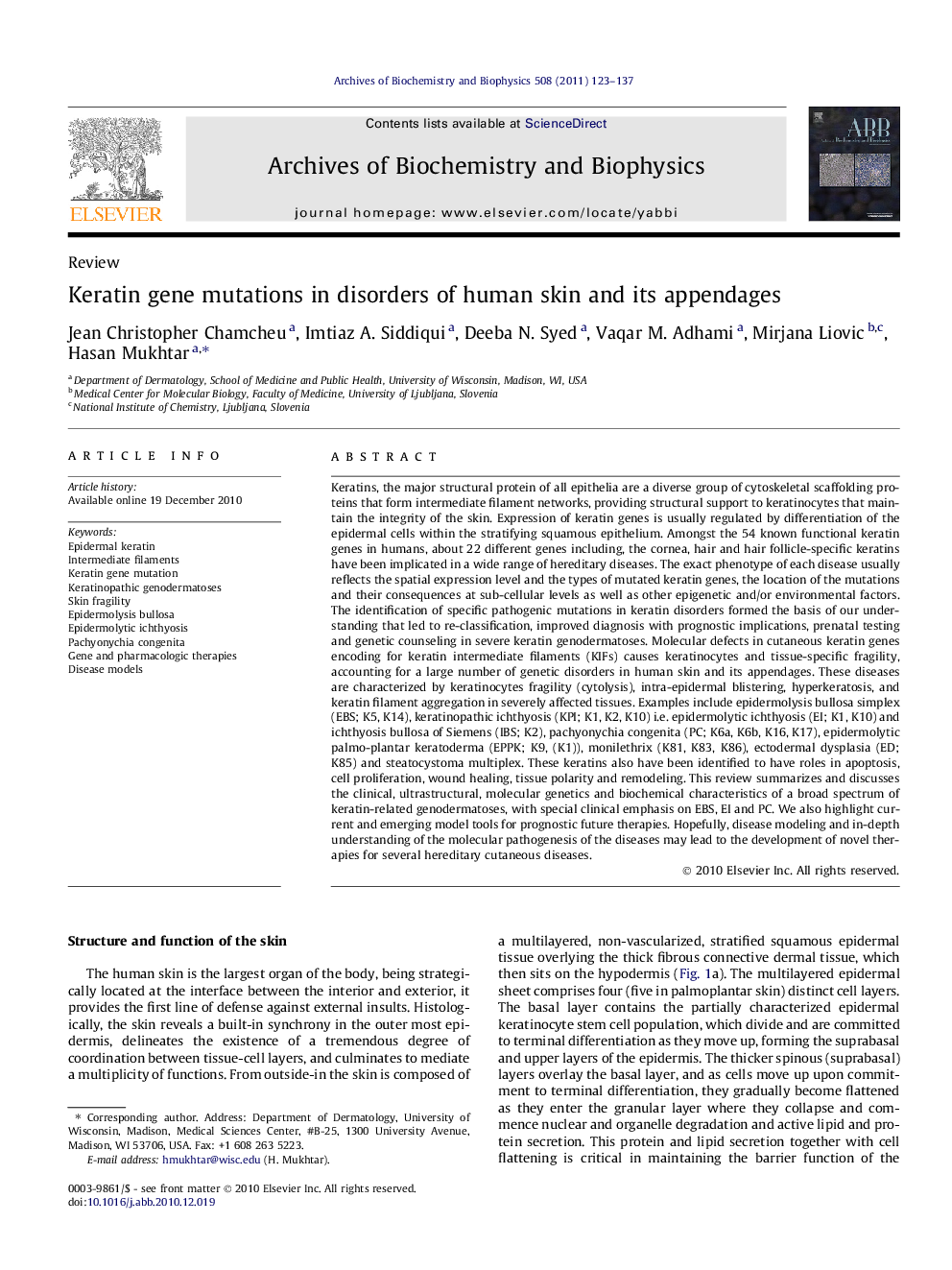| کد مقاله | کد نشریه | سال انتشار | مقاله انگلیسی | نسخه تمام متن |
|---|---|---|---|---|
| 1925770 | 1536415 | 2011 | 15 صفحه PDF | دانلود رایگان |

Keratins, the major structural protein of all epithelia are a diverse group of cytoskeletal scaffolding proteins that form intermediate filament networks, providing structural support to keratinocytes that maintain the integrity of the skin. Expression of keratin genes is usually regulated by differentiation of the epidermal cells within the stratifying squamous epithelium. Amongst the 54 known functional keratin genes in humans, about 22 different genes including, the cornea, hair and hair follicle-specific keratins have been implicated in a wide range of hereditary diseases. The exact phenotype of each disease usually reflects the spatial expression level and the types of mutated keratin genes, the location of the mutations and their consequences at sub-cellular levels as well as other epigenetic and/or environmental factors. The identification of specific pathogenic mutations in keratin disorders formed the basis of our understanding that led to re-classification, improved diagnosis with prognostic implications, prenatal testing and genetic counseling in severe keratin genodermatoses. Molecular defects in cutaneous keratin genes encoding for keratin intermediate filaments (KIFs) causes keratinocytes and tissue-specific fragility, accounting for a large number of genetic disorders in human skin and its appendages. These diseases are characterized by keratinocytes fragility (cytolysis), intra-epidermal blistering, hyperkeratosis, and keratin filament aggregation in severely affected tissues. Examples include epidermolysis bullosa simplex (EBS; K5, K14), keratinopathic ichthyosis (KPI; K1, K2, K10) i.e. epidermolytic ichthyosis (EI; K1, K10) and ichthyosis bullosa of Siemens (IBS; K2), pachyonychia congenita (PC; K6a, K6b, K16, K17), epidermolytic palmo-plantar keratoderma (EPPK; K9, (K1)), monilethrix (K81, K83, K86), ectodermal dysplasia (ED; K85) and steatocystoma multiplex. These keratins also have been identified to have roles in apoptosis, cell proliferation, wound healing, tissue polarity and remodeling. This review summarizes and discusses the clinical, ultrastructural, molecular genetics and biochemical characteristics of a broad spectrum of keratin-related genodermatoses, with special clinical emphasis on EBS, EI and PC. We also highlight current and emerging model tools for prognostic future therapies. Hopefully, disease modeling and in-depth understanding of the molecular pathogenesis of the diseases may lead to the development of novel therapies for several hereditary cutaneous diseases.
► An update of the molecular basis of different keratin-related genodermatoses is presented.
► Clinical emphasis is made on epidermolysis bullosa simplex and keratinopathic ichthyosis.
► Currently available and emerging model tools for prognostic future treatments are emphasized.
► Detailed molecular dissection of the disease mechanisms could lead to novel therapies.
Journal: Archives of Biochemistry and Biophysics - Volume 508, Issue 2, 15 April 2011, Pages 123–137